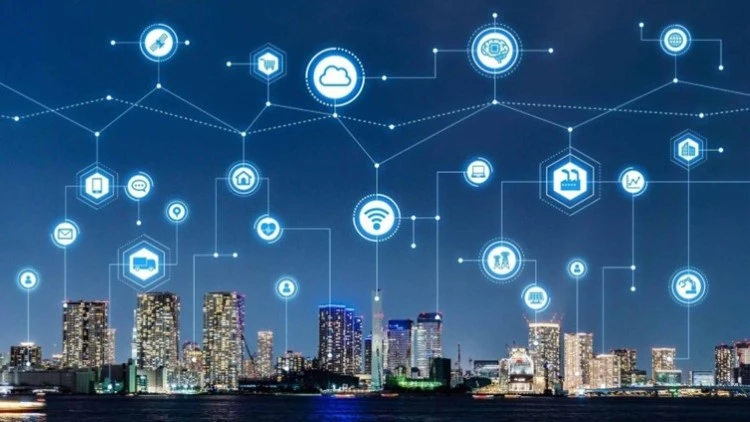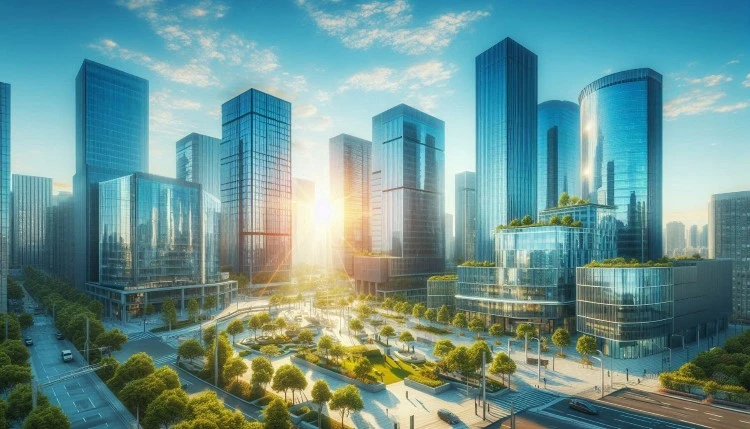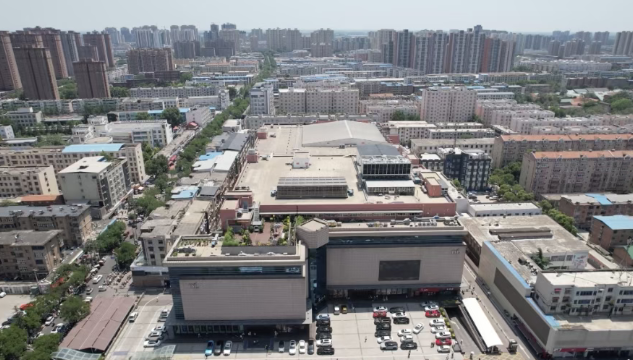The 19th was a century of empires, 20th century was a century of nation-states and the 21st century will be a century of cities
Former Denver Mayor Wellington E. Webb
More and more people live in cities. In 1880 the share of urban population was only 3%. By the middle of 20th century, it had grown to 29%, and in 2023 it has already reached 57.4% and this proportion is expected to increase to 68% by 2050. 1.3 million people are currently moving into cities each week. There are more than 20 megacities with over 10 million people. The top 600 urban centers generate 60% of global GDP.
People move to cities because they believe in achieving better economic, political, and social benefits there. Cities produce the bulk of the public good and present new opportunities to their residents.
As the same time, there are negative impacts of urbanization. The increasing population density, unplanned growth, and demands of urban environments create several problems:
- Degraded environmental quality (noise, poor air, land and water quality, along with other pollution damaging the health of city dwellers).
- Overcrowding, the housing problems, and development of slums (24.2% of global urban population lived in slums in 2020).

- Unemployment (more than half of unemployed youths live in metropolitan cities around the globe).
- Sanitation problems (for example 57% of urban dwellers are lacking access to toilets that provide a full sanitation service, 16% of urban dwellers lacking access to basic sanitation services.
- Traffic congestion and transportation problems (in 2022 London remained the most-congested city with 156 hours of delay per driver.

- Problems of waste disposal (The world generates 2.01 billion tons of municipal solid waste annually, with at least 33% of that not managed in an environmentally safe manner).
- Security issues including urban crime.
- Social inequality including infrastructure inequality.
Decoding the essence of smart cities
In the ever-evolving landscape of urban development, the concept of Smart Cities has emerged as a revolutionary approach to addressing the challenges faced by rapidly growing urban centers. As our world becomes increasingly interconnected, the integration of technology and data-driven solutions into urban planning has given rise to the creation of Smart Cities. These innovative urban spaces can enhance the quality of life for residents, promote sustainability, and tackle complex urban challenges.
In 2023, the global smart cities market size reached USD 1,233.7 billion. Looking forward, experts expect the market to reach USD 4,633.9 billion by 2032, exhibiting a growth rate (CAGR) of 15.4% during 2024-2032.
It is known that most of the most advanced smart cities are located in China, which has a political regime capable of concentrating resources to implement relevant projects. There are examples of other authoritarian regimes in which smart city projects are successfully implemented. However, the leaders in the smart city rankings are cities in countries with a democratic regime. In the top ten leaders, there are only two cities from countries with a non-democratic regime. One of them is Singapore, which in 2023 took 7th place among the smart cities in the world, and in 2024 rose to 5th after Zurich, Oslo, Canberra and Geneva.
What does a smart city mean? How can it make our lives more sustainable?
A smart city is an urban area that leverages technology and data to enhance the efficiency of services, improve the quality of life for residents, and address environmental and social challenges. As our world becomes increasingly interconnected, the integration of technology and data-driven solutions into urban planning has given rise to the creation of smart cities in reality. These cities utilize a network of interconnected devices, sensors, and data analytics to optimize various aspects of urban living, including transportation, energy consumption, waste management, healthcare, and public safety.
There are some key components of smart cities:
- Smart cities use the Internet of Things (IoT) and rely on a vast network of interconnected devices and sensors that collect and analyze data in real-time. This data is used to make informed decisions, optimize resource allocation, and enhance overall city management.
- Smart cities use data analytics and artificial intelligence to gain insights into various urban processes. For example, predictive analytics can be used to anticipate challenges like traffic congestion, waste management issues, or even public health crises, enabling proactive solutions.
- Smart cities create smart transportation systems that include intelligent traffic management, real-time public transportation tracking, and electric vehicle infrastructure, helping alleviate congestion, reduce pollution, and improve overall mobility.
- Smart cities embrace digital governance to enhance transparency, efficiency, and citizen engagement. Online platforms and mobile applications streamline communication between residents and local authorities, allowing for better service delivery and responsiveness.

Smart cities can help to resolve various problems connected to sustainable development and quality of life:
- Smart Cities implement intelligent transportation systems that utilize real-time data to optimize traffic flow, reduce congestion, and enhance overall mobility. This not only improves commute times but also reduces air pollution and fuel consumption.
- Through the integration of smart grids and energy-efficient technologies, smart cities aim to reduce overall energy consumption. This not only lowers costs but also promotes environmental sustainability.
- Smart waste management systems reduce operational costs, minimize environmental impact, and ensure efficient waste disposal.
- Smart Cities employ advanced surveillance systems, predictive policing, and emergency response mechanisms to enhance public safety. The use of technology facilitates quicker response times and more effective crime prevention strategies.
- By focusing on sustainability, efficient public services, and citizen engagement, Smart Cities contribute to an improved quality of life for residents. Access to real-time information, efficient transportation, and a cleaner environment are just a few of the factors that enhance overall well-being.

In general, smart cities represent a transformative approach to urban development, offering solutions to some of the most pressing challenges faced by rapidly growing urban populations. As technology continues to advance, the integration of smart infrastructure and data-driven solutions can play a crucial role in shaping the cities of the future, creating more sustainable, efficient, and livable urban environments.


